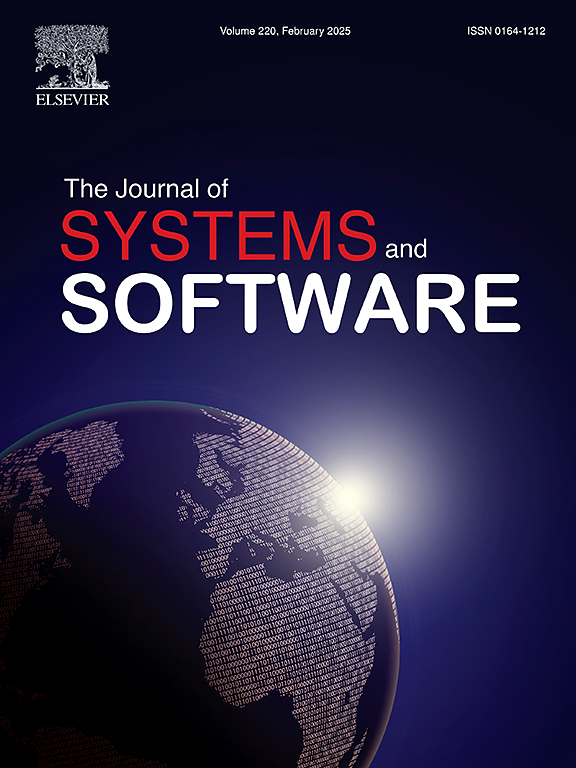Developing and sustaining a student-driven software solutions center—An experience report
IF 3.7
2区 计算机科学
Q1 COMPUTER SCIENCE, SOFTWARE ENGINEERING
引用次数: 0
Abstract
Traditional approaches to software engineering education often limit students’ exposure and engagement to real-world projects; thereby, failing to fully harness their potential and creativity. Yet, the dynamic and rapidly-advancing digital landscape means that there is a continuous need to empower students to become active participants, problem solvers, and innovators in delivering high-quality software solutions. Therefore, it is not surprising that fresh graduates are often ill-equipped to handle industrial projects. Existing approaches to exposing students to industrial projects such as internships or capstone projects have not achieved the desired result because industries are often reluctant to assign important tasks to interns, and a capstone project is likely to be discontinued by the student after completing the course. Furthermore, all the team members in a capstone project are usually inexperienced engineers, and this may limit mentorship opportunities for the students. This paper presents an experience report on the establishment and sustenance of a student-driven software solutions center named Information Technology Solutions Center (ITSC), a unit within the School of Information Technology at the University of Cincinnati. A student-driven solution center empowers students to drive the design, development, execution, and maintenance of software solutions for industrial clients. This exposes the students to real-world projects and ensures that students are fully prepared to meet the demands of the ever-changing industrial landscape. The ITSC was established over a decade ago, has trained over 100 students, and executes about 20 projects annually with several industrial partners including Fortune 500 companies, government institutions, and research agencies. This paper discusses the establishment and maintenance of the center with the goal of motivating and providing a clear blueprint for computing programs that want to establish a similar student-driven software solutions center.
开发和维持学生驱动的软件解决方案中心--经验报告
传统的软件工程教育方法往往会限制学生接触和参与真实世界的项目,从而无法充分发挥他们的潜力和创造力。然而,动态和快速发展的数字环境意味着,在提供高质量软件解决方案的过程中,学生需要不断增强能力,成为积极的参与者、问题解决者和创新者。因此,应届毕业生往往不具备处理工业项目的能力也就不足为奇了。现有的让学生接触工业项目(如实习或毕业设计项目)的方法并没有达到预期效果,因为工业企业通常不愿意将重要任务分配给实习生,而毕业设计项目很可能在学生完成课程后被终止。此外,顶点实习项目的所有团队成员通常都是缺乏经验的工程师,这可能会限制学生获得导师指导的机会。本文介绍了辛辛那提大学信息技术学院下属的一个名为信息技术解决方案中心(ITSC)的学生驱动型软件解决方案中心的建立和维持经验报告。以学生为主导的解决方案中心使学生能够为工业客户推动软件解决方案的设计、开发、执行和维护。这让学生接触到真实世界的项目,确保学生做好充分准备,以满足不断变化的工业环境的需求。ITSC 成立十多年来,已培训了 100 多名学生,每年与包括财富 500 强企业、政府机构和研究机构在内的多个行业合作伙伴执行约 20 个项目。本文讨论了该中心的建立和维护,旨在为希望建立类似的学生驱动型软件解决方案中心的计算机专业提供激励和清晰的蓝图。
本文章由计算机程序翻译,如有差异,请以英文原文为准。
求助全文
约1分钟内获得全文
求助全文
来源期刊

Journal of Systems and Software
工程技术-计算机:理论方法
CiteScore
8.60
自引率
5.70%
发文量
193
审稿时长
16 weeks
期刊介绍:
The Journal of Systems and Software publishes papers covering all aspects of software engineering and related hardware-software-systems issues. All articles should include a validation of the idea presented, e.g. through case studies, experiments, or systematic comparisons with other approaches already in practice. Topics of interest include, but are not limited to:
•Methods and tools for, and empirical studies on, software requirements, design, architecture, verification and validation, maintenance and evolution
•Agile, model-driven, service-oriented, open source and global software development
•Approaches for mobile, multiprocessing, real-time, distributed, cloud-based, dependable and virtualized systems
•Human factors and management concerns of software development
•Data management and big data issues of software systems
•Metrics and evaluation, data mining of software development resources
•Business and economic aspects of software development processes
The journal welcomes state-of-the-art surveys and reports of practical experience for all of these topics.
 求助内容:
求助内容: 应助结果提醒方式:
应助结果提醒方式:


